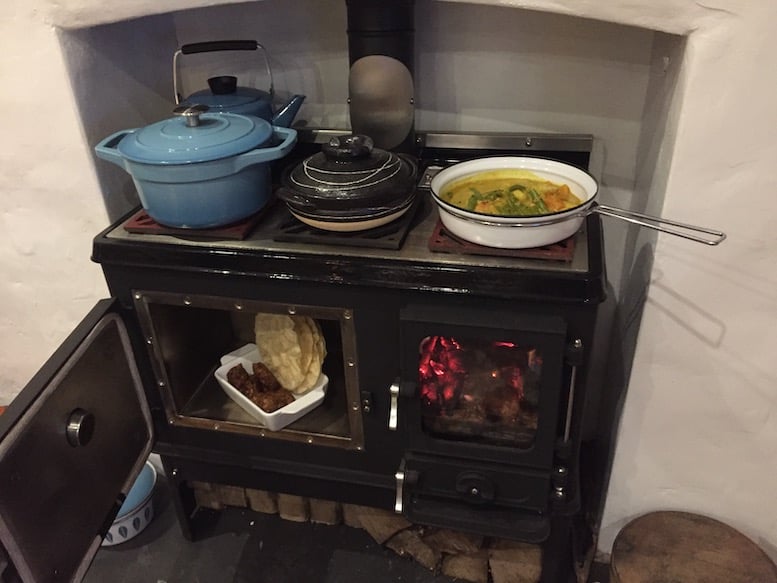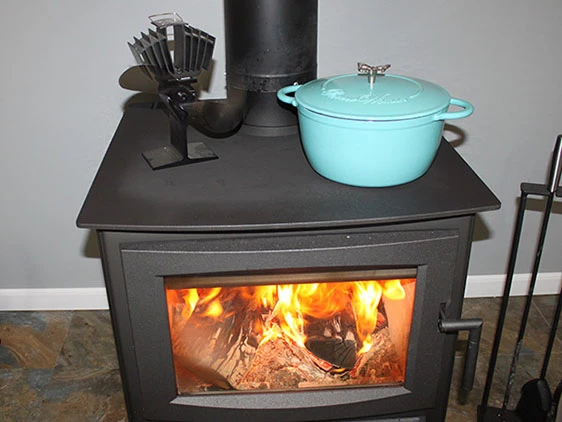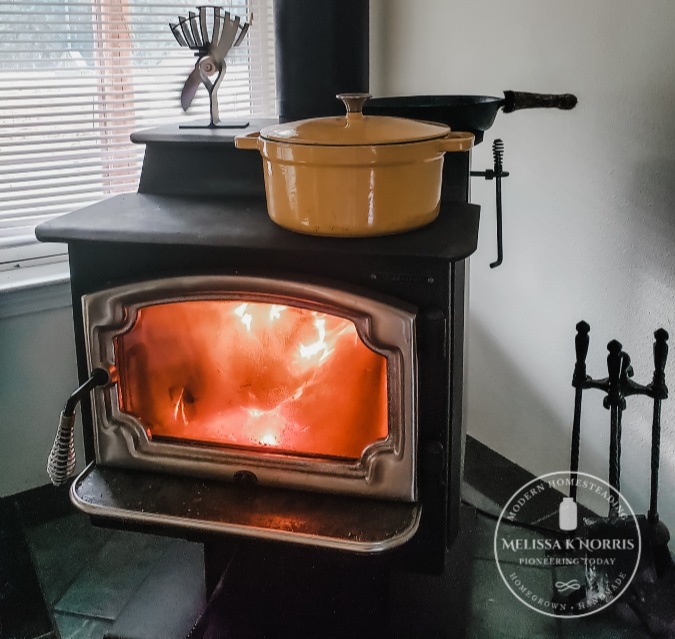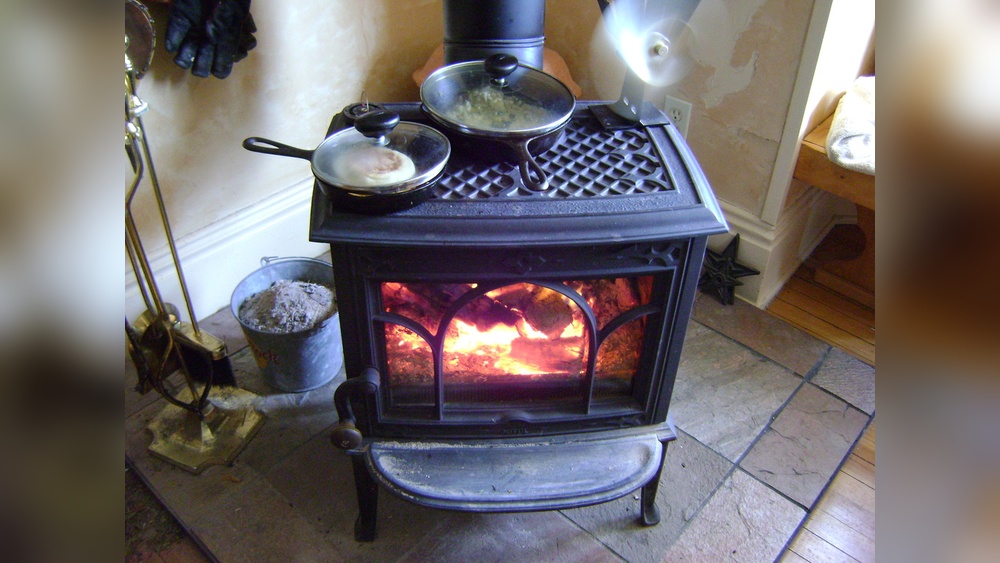If you’ve ever wondered how to cook on a wood stove, you’re about to discover a simple, rewarding skill that can save you money and add a cozy charm to your kitchen. Cooking on a wood stove isn’t just about heating your home—it’s about using that warmth to prepare delicious meals in a natural, efficient way.
Whether you’re new to wood stove cooking or looking to improve your technique, this guide will walk you through everything you need to know. From controlling the fire to choosing the right cookware, you’ll learn how to turn your wood stove into a reliable cooking companion.
Ready to bring a rustic touch to your cooking routine? Let’s dive in.

Credit: salamanderstoves.com
Choosing The Right Wood Stove
Choosing the right wood stove is key to successful cooking. The stove must fit your cooking needs and space. It should provide enough heat and a stable surface for pots and pans. Picking the best stove saves time and fuel. It also makes cooking safer and more enjoyable.
Types Of Wood Stoves
Wood stoves come in several styles. Some are designed mainly for heating, while others focus on cooking. Cookstoves often have built-in ovens or flat tops. Heating stoves may lack a flat surface for pots. Some models combine both features. Choose a stove that suits your primary use.
Size And Capacity
The stove size matters for both heat and cooking space. A small stove heats a small room and holds less wood. A larger stove can cook more food at once. Think about the number of people you cook for. Also, consider the size of your cooking pots and pans. Bigger stoves may need more fuel and space.
Flat Surface For Cooking
A flat surface is essential for cooking on a wood stove. It holds pots steady and distributes heat evenly. Some stoves have smooth tops, while others have ridges or bumps. Smooth, thick tops work best for even heat. Check the stove’s surface area to fit your cookware. A good surface makes cooking easier and safer.
Preparing Your Wood Stove For Cooking
Preparing your wood stove for cooking is the first step to a successful meal. It ensures safety and efficient heat. A well-prepared stove creates the right cooking environment. This section covers key points like chimney height, damper control, and safety rules.
Proper Chimney Height
The chimney must be the correct height for safe use. It should extend at least 3 feet above the roof. Also, it should be 2 feet higher than any part of the roof within 10 feet. This height helps create a strong draft. The draft pulls smoke and gases out of your home. A good draft keeps the fire burning well. It also stops smoke from coming back inside. Proper chimney height follows building codes. It protects your home from fire risks. It also helps your stove work efficiently.
Opening The Damper
Always open the damper fully before lighting the fire. The damper controls airflow inside the stove. Opening it allows smoke to exit through the chimney. It also feeds air to the fire, helping it burn hot. A closed damper can cause smoke to fill the room. Keep the damper open until the fire is strong. After cooking, close the damper to save heat. Knowing how to use the damper improves cooking results.
Fire Safety Measures
Safety is a must when cooking on a wood stove. Clear the area around the stove of flammable items. Keep a fire extinguisher nearby and know how to use it. Use dry, well-seasoned wood to reduce smoke and sparks. Never leave the fire unattended while cooking. Use stove gloves to protect your hands from burns. Check the stove and chimney regularly for damage or blockages. These steps prevent accidents and keep your home safe.
Starting The Fire
Starting a fire in your wood stove is the first step to cooking meals. A strong, steady fire gives consistent heat for cooking. It also helps save wood and keeps smoke out of the house. Knowing how to start the fire properly makes cooking easier and safer.
Follow simple steps to gather materials, build the fire, and light it well. This guide shows you how.
Gathering Materials
Collect dry wood in three sizes: tinder, kindling, and fuelwood. Tinder is small, dry material that catches fire quickly. Kindling is small sticks that help the fire grow. Fuelwood is larger logs that burn longer and provide steady heat. Also, have matches or a lighter ready. Keep everything dry for best results.
Building The Fire
Start by placing tinder in the center of the stove’s firebox. Arrange kindling in a teepee shape around the tinder. Leave space between sticks for air to flow. Add a few small pieces of fuelwood around the kindling. Avoid packing wood too tightly. Good airflow helps the fire catch and burn well.
Lighting Techniques
Light the tinder with a match or lighter. Let the flames grow slowly. Blow gently at the base if the fire needs more oxygen. Add more kindling as the fire grows stronger. Once the kindling burns well, add larger fuelwood pieces. Open the stove’s air vents to control airflow. Adjust vents to keep the fire burning steady. Avoid smothering the fire by closing vents too much.

Credit: www.efireplacestore.com
Managing The Fire While Cooking
Managing the fire while cooking on a wood stove is key to good results. The fire controls the heat, smoke, and overall cooking process. Watch the fire closely to keep a steady temperature. Small changes can affect cooking times and flavors. A well-managed fire saves wood and improves safety.
Understanding how to adjust the damper, control heat, and monitor smoke helps you cook better meals. Each step helps keep the fire strong and even. This section shows easy ways to manage your wood stove fire.
Adjusting The Damper
The damper controls airflow inside the stove. Open it more to let in air, which makes the fire burn hotter. Close it a bit to slow the fire down. Adjust the damper slowly and watch the fire’s reaction. Too much air can cause quick burns. Too little air can smother the fire. Find the right balance to keep steady heat for cooking.
Controlling Heat Levels
Heat control depends on how much wood you add and how you set the damper. Add smaller pieces of wood for quick heat. Use larger logs for longer, steady heat. Move pots around the stove surface to find hotter or cooler spots. Keep food moving or adjust heat to avoid burning. Control heat to cook food evenly and safely.
Monitoring Smoke
Smoke shows how well your fire burns. Thin, light smoke means good burning. Thick, dark smoke means poor burning and wasted wood. Check the chimney and stove pipe for smoke leaks. Keep the fire dry by using seasoned wood. Watch smoke to know when to adjust airflow or add wood. Clean smoke means a cleaner fire and better cooking.
Cooking Techniques On A Wood Stove
Cooking on a wood stove offers a unique experience. It requires different techniques than modern stoves. Understanding how heat moves and how to control it is key. This section explains common cooking methods on a wood stove. Simple steps help achieve great results with basic tools.
Using Pots And Pans
Choose heavy, flat-bottomed pots and pans. Cast iron works best for even heat distribution. Place them directly on the stove’s surface. Move them around to control cooking temperature. Avoid thin metal cookware; it heats unevenly and may burn food. Use lids to keep heat and moisture inside. Lift pots carefully to prevent spills or burns.
Baking And Roasting
Use the stove’s oven or a Dutch oven placed near the fire. Maintain a steady fire to keep a consistent temperature. Check food often because wood stoves do not have precise controls. Rotate dishes to ensure even baking and roasting. Use a thermometer to monitor heat inside the oven. Baking bread, roasting vegetables, and cooking casseroles all work well.
Simmering And Boiling
Simmering requires low, steady heat. Place pots on cooler parts of the stove or raise them slightly. Boiling needs higher heat near the fire. Watch water carefully to avoid boiling over. Stir soups and stews regularly to prevent sticking. Adjust wood supply to control flame size and temperature. This method works well for soups, stews, and boiling water for drinks or pasta.
Cleaning And Maintenance Tips
Keeping your wood stove clean and well-maintained is key for safe and effective cooking. Dirt and soot can reduce heat efficiency and cause damage. Regular cleaning extends your stove’s life and ensures a better cooking experience.
Follow these simple tips to keep your wood stove in top shape. Each step helps avoid common problems and keeps your kitchen safe.
Removing Ashes
Remove ashes often to keep airflow clear. Wait until ashes cool completely before cleaning. Use a metal container to collect ashes. Avoid leaving ashes inside for long periods. This prevents blockages and helps the stove burn better.
Chimney Cleaning
Clean your chimney at least once a year. Creosote buildup can cause chimney fires. Use a chimney brush that fits your chimney size. Clear out soot and debris to keep smoke flowing out. Check for any cracks or blockages too.
Regular Stove Inspection
Check your stove for cracks or rust regularly. Inspect door seals and glass for damage. Replace worn parts to keep the stove safe and efficient. Make sure air vents open and close properly. A well-maintained stove works better and lasts longer.
Safety Tips For Wood Stove Cooking
Cooking on a wood stove offers a unique, cozy experience. It also requires careful attention to safety. Following simple safety tips helps prevent accidents and ensures a pleasant cooking environment. Focus on fire prevention, carbon monoxide awareness, and proper ventilation to stay safe.
Preventing Fires
Keep the area around the stove free of flammable items. Use a fire-resistant mat under the stove if needed. Never leave the stove unattended while cooking. Always use dry, seasoned wood to reduce sparks. Keep a fire extinguisher nearby for emergencies. Regularly clean the stove and chimney to avoid creosote buildup. Use stove tools designed for handling hot surfaces safely.
Carbon Monoxide Awareness
Wood stoves produce carbon monoxide, a deadly gas without smell or color. Install carbon monoxide detectors near the stove and in bedrooms. Test detectors monthly and replace batteries regularly. Never use a wood stove in a closed, unventilated space. Avoid burning trash or treated wood, as they release toxic fumes. Learn the symptoms of carbon monoxide poisoning: headache, dizziness, and nausea. Leave the house immediately if you suspect a leak.
Proper Ventilation
Ventilation helps remove smoke and harmful gases from your home. Make sure the stove pipe connects tightly to the chimney. Check that the chimney is tall enough to create a good draft. Open a window slightly to allow fresh air flow. Inspect the chimney for blockages, such as bird nests or debris. Have a professional inspect and clean your chimney yearly. Good ventilation keeps your home safe and your stove burning efficiently.

Credit: melissaknorris.com
Frequently Asked Questions
What Is The 3:2-10 Rule For Wood Stoves?
The 3:2-10 rule for wood stoves means the chimney should extend 3 feet above the roof and 2 feet higher than any roof surface within 10 feet. This ensures proper draft and fire safety.
Can You Cook Food On A Wood-burning Stove?
Yes, you can cook food on a wood-burning stove if it has a flat, heat-resistant surface. It saves energy by using stove heat for cooking. Many homesteaders use wood stoves to boil, simmer, and warm meals efficiently. Always monitor cooking to avoid fire hazards.
How To Use A Wood Stove For Beginners?
Start by opening the damper fully for proper airflow. Use dry, seasoned wood and arrange kindling in a small stack. Light the fire safely, adding larger logs as flames grow. Adjust the damper to control burn speed. Always monitor the fire and never leave it unattended.
Do You Leave The Damper Open Or Closed When Burning Wood In The Fireplace?
Leave the damper fully open when lighting and burning wood. Partially close it to slow the burn, but never fully until ashes are cold.
Conclusion
Cooking on a wood stove brings warmth and flavor together. It takes patience and practice to get it right. Use steady heat and check your food often. Adjust fire size to control cooking temperature. Keep safety in mind with proper chimney height and ventilation.
Enjoy the unique taste that wood stove cooking offers. With simple steps, you can make delicious meals any time. Give it a try and discover a new way to cook at home.

